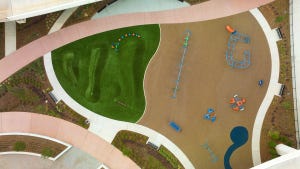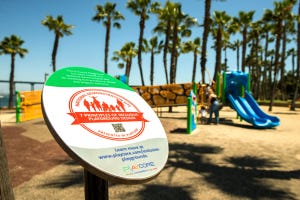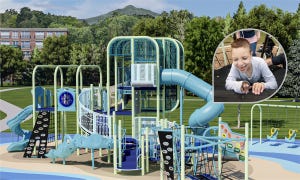An older gentleman sits on a park bench, reading a newspaper and sipping coffee from a paper cup. Nearby a grandmother and grandfather walk along a sidewalk with their young grandchild who is tugging at their hands, urging them to walk faster. Images like these have been etched into our imaginations by television and films over the past half century, but a recent study shows that these images might really be imaginary.

Natural scientists at RAND collected data from nearly 200 parks in 25 major U.S. cities to determine how parks across the country are being used, and by whom. One of the most significant findings was older adults are not utilizing public parks. This and other findings were recently published in the American Journal of Preventive Medicine. The study’s lead author, Deborah Cohen, told National Public Radio during a recent interview, “You’d think that seniors would be retired and would have more time [to go to the park], but they’re not using the parks very much.”
One of the reasons older adults aren’t using parks is there aren’t enough amenities or programming designed for their specific interests or needs. The study found that almost all the parks surveyed included lawns and playgrounds. Half of the parks had baseball fields or basketball courts, but less than one-third had a walking path. Almost none of them had a dedicated outdoor fitness equipment area. The study also found that of the approximately 70 million older adults living in the United States, less than three million are utilizing parks.
.png)
That means parks across the country could increase park usage by 67 million people if they provide amenities and programming designed to serve older adults. Here are six ways to make your parks more appealing to this segment of the population and provide more opportunities for everyone in your community to be more active outdoors:
.png)
1. Walking Paths & Trails
The study found older adults who visit parks most often use walking paths or trails. When adding walking paths, consider natural shade or utilize manufactured shade structures to make the paths more comfortable to encourage longer and more frequent use. Include signs or mile markers so walkers can track their progress. Add a park bench at regular intervals, or include natural playgrounds in pockets along the path.
2. Multigenerational Activities
Older adults are more likely to use parks in the morning and on weekdays - times that young children are not in school. Adding park amenities that appeal to both older adults and children is a great way to encourage grandparents to bring their grandchildren to a park. Expression Swing™ allows a grandparent and grandchild to swing together, face-to-face and eye-to-eye.
3. Outdoor Fitness
Include outdoor fitness equipment, particularly products that are designed for older adults. GTfit includes products for active, aging adults that feature hand grips and additional supports, as well as products that help adults improve balance and flexibility - two key elements to reduce falls and fall-related injuries.
4. Games & Activities
Drum Barracks Park in Wilmington, CA is located near a retirement community. Park developers added chess and checkerboard tables to an area near the playground to encourage adults to socialize with one another while children and grandchildren play nearby.
5. Maximize Proximity
A similar study in Los Angeles found that parks within one-mile of a large population area were more likely to be utilized by all age groups. “Pocket Parks” are mini-parks developed on vacant or unused parcels. They’re a great way to encourage older adults to utilize community gardens, fitness equipment, walking paths or playgrounds, depending on the needs of the community.
6. Programs
The most requested feature by older adults was programming that met their needs. While many parks host youth baseball or soccer leagues, there isn’t much programming for older adults. One exception is in Hillsborough County, Florida where the Hillsborough Recreation Center hosts fitness classes (indoors and outdoors) for older adults on a regular basis. Consider adding walking clubs, yoga in the park or other social activities that appeal to older adults.
- Trails (27)
- Schools (180)
- Press Releases (102)
- Playground Funding (3)
- Play Science & Research (62)
- Parks & Recreation (339)
- Outdoor Fitness (137)
- National Demonstration Site (32)
- Landscape Architects (72)
- Inclusive Play (101)
- Daycare and Early Learning (62)
- Custom Play (36)
- College Campus (27)
- Churches (50)
- Challenge Course (30)
- Featured Projects (72)
- Site and Shade (6)





